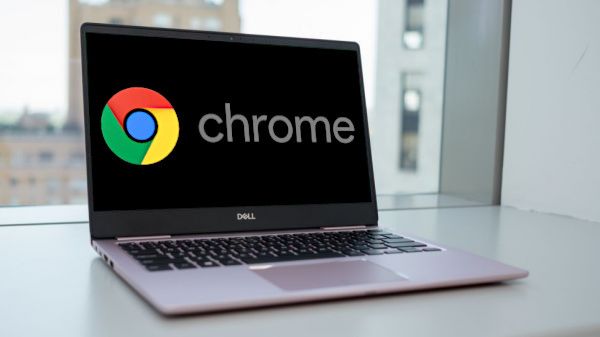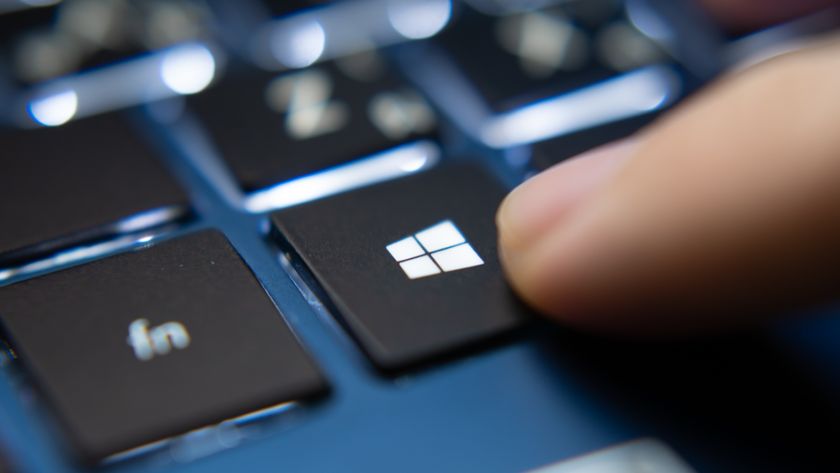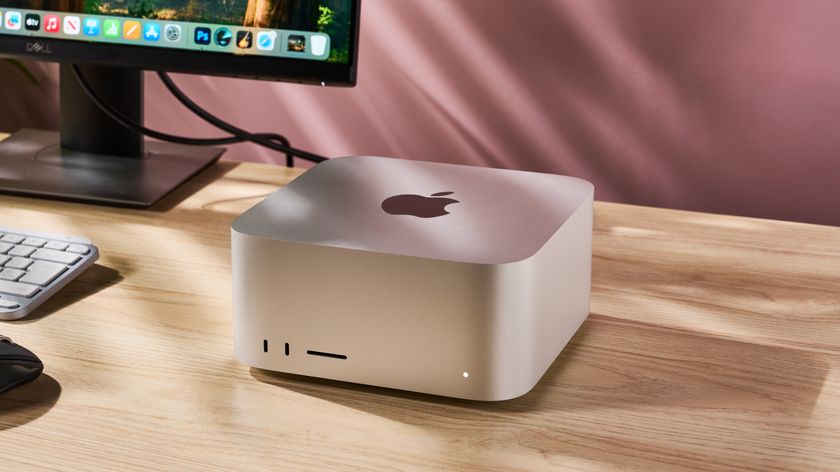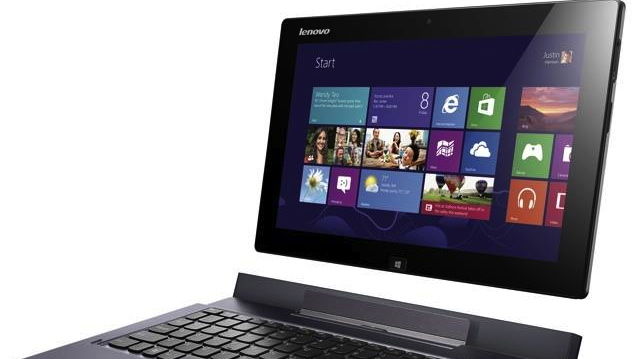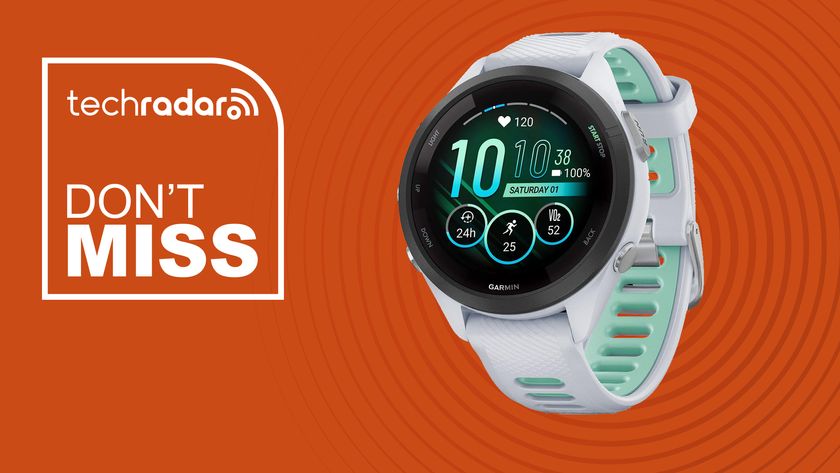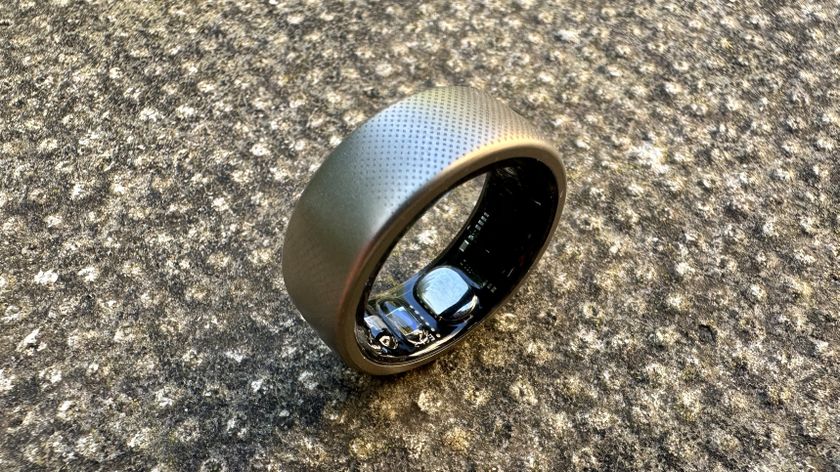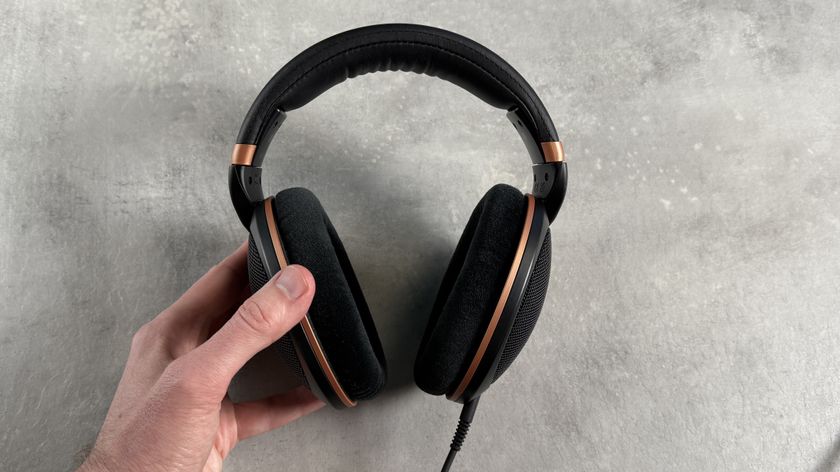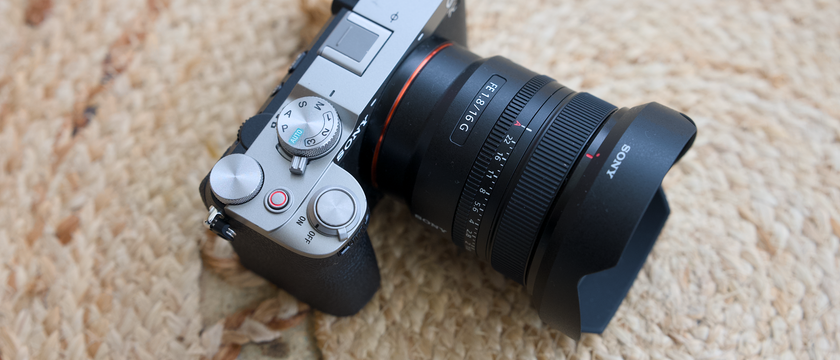TechRadar Verdict
Pros
- +
Solid keyboard
- +
Versatile design
- +
Wide 1080p display perfect for movies
- +
Strong battery life
Cons
- -
Tablet has awkward form factor and recessed switches
- -
Unintuitive, finicky touchpad
- -
Ugly dock
- -
Top heavy and tippy
- -
Expensive
Why you can trust TechRadar
Hey business travelers, if you found a magic lamp in the overhead compartment on your next flight, what would you wish for? Unlimited frequent flyer miles? Free first class upgrades for life? Leg room the length of a bowling lane? Or maybe you'd dream big and try to lighten the load in your carry on?
Lenovo is no genie, but that's one wish it's looking to grant. Its ThinkPad Helix is a convertible ultrabook, a Windows 8 tablet that hooks into a custom dock for laptop style productivity.
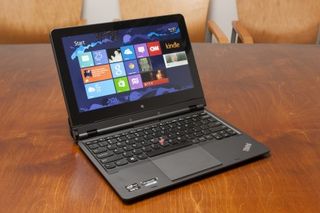
Lenovo has owned the ThinkPad name since acquiring it from IBM in 2005. Its maintained the brand's reputation with excellent laptops like the ThinkPad X1 Carbon, but its forays into hybrid machines have been more mixed.
While the ThinkPad Helix improves on the design of devices like the ThinkPad Tablet 2, it's not a Windows 8 dream machine. Lenovo has made some questionable design choices with the Helix, including an overhaul of the ThinkPad's signature trackpad that could dismay its most dedicated fans.
It's also priced the Helix into the upper echelons of the ultrabook market, with configurations starting at $1,649. That's a heavy asking price for a machine packing Ivy Bridge, not Haswell, the new Intel chip that's providing a dozen hours of battery life for the new MacBook Air.
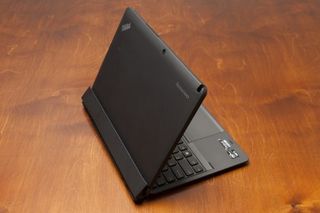
When we first saw the ThinkPad Helix at CES 2013, our interest was piqued. Lenovo machines are famous for sound construction, and if there was ever a design that needed some love, it's the convertible ultrabook. But that was months ago, and the Helix might be too late to the game.
So should you go all in with the Lenovo ThinkPad Helix? Or keep letting your shoulder suffer with a separate tablet and laptop? Note that either option is cheaper than those obscene first class ticket prices.
Design
Lenovo knows how to make a laptop for the suit and briefcase crowd, and that seems to be the target audience for the ThinkPad Helix. The machine has a matte black finish with a couple of red highlights. It makes for a look that's subdued if not terribly attractive. It has a rubbery feel that makes it easy to grip and pleasant to hold.
It's on the chunkier end of the ultrabook equation, with the tablet weighing 1.73 lbs, 3.54 lbs when joined with the keyboard stand. The tablet measures 11.66 x 7.37 x 0.46 inches. Docked with with its keyboard, it's 11.66 x 8.90 x 0.80 inches.
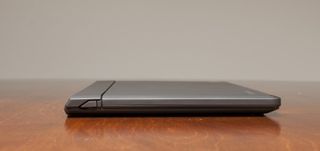
The Helix dock has two hooks that slide into the tablet and hold it in place, and a switch to the left to release it. It can be somewhat finicky to line it up right, but you can rest assured that it's a secure connection. That's one of the biggest advantages the Helix has over the ThinkPad Tablet 2: it can't tumble out of its dock, and it can fold up clamshell style like a true laptop. It's the more portable device of the two.
The Helix's dock does more than provide a keyboard. It actually has its own battery and fans, so the Helix gets additional longevity when its connected, and its processor overclocks for a noticeable performance boost.
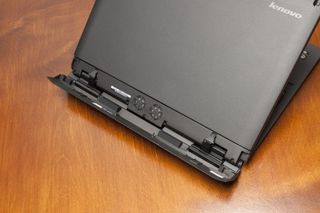
The cost of this is ugly fans hidden behind an odd plastic flap. It's one of many complaints we have about the Helix's overall design. Like all convertibles, it's top heavy. This isn't a problem when you're using it at a desk, but on your lap or the couch, it's prone to toppling backwards.
It's also hard to open the Helix with one hand. There's no groove to grab it by, and if you just lift up the screen without holding onto the base, the two don't separate.
We're also not crazy about the tiny, sunken on/off and volume switches on the tablet. They're you need a fingernail to press them. When you're using the Helix as a tablet, it's ridiculous you can't use the easy to press, prominently placed Windows button to wake the device.
Display
Like a Surface Pro and a lot of Windows 8 slates, the tablet has a wide form factor. It's awkward to type on the Helix tablet while holding it; unless you have thumbs like an orangutan you'll want to opt for the split onscreen keyboard.
The tablet is also very tall when held in portrait orientation. We felt a bit goofy holding it that way when doing some Kindle reading.
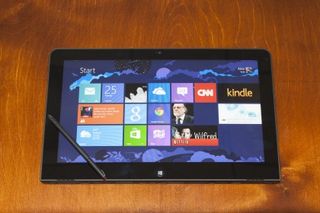
It's an aspect ration that's not great in the hand, but excellent for watching videos. It's a full 1080p screen, so Netflix and YouTube all look great. However, that ultra high native resolution makes the desktop and its apps look eye-strainingly small.
To combat this, we found ourselves zooming in on Google Chrome pages before just dropping the resolution down to 1600 x 1900; so much for full 1080p. All the Windows 8 apps looked fine though, this is really just a desktop issue.
Keyboard and touchpad
Lenovo laptops are known for having great keyboards, and that reputation comes through for the ThinkPad Helix in spades. A lot of convertible keyboards, like the one on the Acer Iconia W510 and ThinkPad Tablet 2, are either cramped or lack keypress depth. That's not the case with typing on the Helix.
The keyboard has been truncated in some minor ways, like slightly smaller arrow keys. The function keys each pull double duty, but you can toggle on and off a function lock that circumvents this.
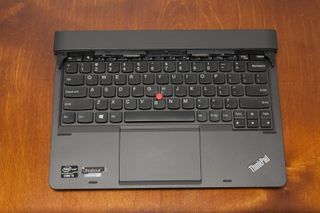
There's no backlight on this keyboard, which is a pity, and keys like caps lock don't glow when engaged. Instead Lenovo has built in on screen cues to let you know when they're active.
Minor quibbles aside, the overall typing experience on the ThinkPad Helix is very good. We'd say this is the best keyboard we've used on a hybrid machine. The keys are slightly curved and evenly spaced, with enough depth to the press that they're completely functional. For our money it easily bests the type cover on the Microsoft Surface.
The touchpad, however, is a different story. Lenovo has done away with the dedicated click buttons found on past ThinkPads and instead made the touchpad itself clickable. You can click by pressing down, or with a quick tap, anywhere on the pad. It also has multi-touch recognition, so a two finger tap is a right click, and sliding with two fingers is a scroll.
There are also multi-finger gestures, reminiscent of what you'll find on a MacBook, but optimized for Windows. For example, a four finger swipe switches between the tiled Start screen and the desktop.
The gestures are great, but the touchpad has been divided into different zones that overcomplicate things. If you scroll with two fingers to the top of the pad, the Helix starts to scroll until you pick your fingers up. It's too easy to trigger on accident and blow past what you want to see.
Basically, the touchpad feels finicky, and will likely annoy old school ThinkPad fans. At least they have the trackpoint to fall back to.
The Helix also comes equipped with a stylus, which you'll find useful if you plan to use a note taking app. Otherwise it's a good way to navigate the desktop when you're in tablet mode. It offers precision that you need to hit little things like a YouTube pause button or the X to close a window.
Specifications
- 1.8Ghz Intel Core i5-3337U
- 11.6-inch 1920 x 1080 ten point MultiTouch display
- Intel HD 4000 graphics
- 4GB PC3-10600 1333MHz DDR3L
- Bluetooth 4.0 and NFC
- 128GB Micro Solid State Drive, Serial ATA3
Those are the specs for our review unti, which retails for $1,679. Right off the bat, it's a real pity that the ThinkPad Helix is not a Haswell machine. While Intel's new fourth generation chip doesn't provide a lot of extra processing power, it's designed to provide extended battery life. That would've been perfect for this machine.
Not that the Helix is bad on power consumption. It actually boasts quite respectable battery life, but all day battery would help justify the premium price.
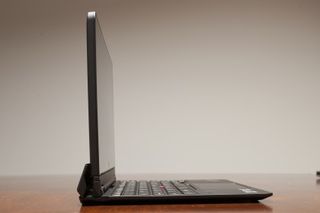
For ports, the Helix tablet has USB 2.0, a mini displayport, a full size SIM card slot (making it 3G and 4G LTE capable) and a headphone jack. It should be noted that all of these ports and slots, with the exception of the headphone jack, are on the bottom of the tablet and become inaccessible once the tablet has been docked.
The dock provides its own set of ports to compensate. You'll find two USB 3.0 ports, and a mini displayport all lined up along the rear of the dock.
The Lenovo ThinkPad Helix's SSD comes in three sizes: 128, 256 and 386 increments. It can also be upgraded to 8GB of RAM.
Performance and battery life
A 1.8 GHz processor and 4GB of RAM may seem small on paper, but in practice the ThinkPad Helix is a surprisingly capable machine. Both the Windows 8 tiled interface and desktop ran smoothly on our review unit.
Browsing in either Chrome or Internet Explorer, we could get a dozen tabs going before performance started to chug. This is with the tablet docked in its helpful stand, which provides extra cooling and allows the processor to overclock a little.
The performance enhancement is noticeable, and the fans generate minimal noise. This is by no means a gaming machine, but we were able to play some Half Life 2: Episode 2 with an acceptable framerate.
The stand also provides additional battery life. With its help, we generally got 7 to 8 hours of web surfing and word processing. As just a tablet, the Helix got between 5 and 6 hours. That's not bad at all, certainly better than a Surface Pro, but one can't help but think of what Haswell could've done for this machine.
Verdict
When we first saw the Lenovo ThinkPad Helix at CES 2013, it had us really excited. We thought Lenovo had finally cracked the convertible ultrabook, a design we've never been totally sold on.
But that was months ago, in a pre-Haswell, 12-hour MacBook Air world. The ThinkPad Helix is better late than never, but its $1,679 price point makes it tough to recommend. Why? Let us break it down for you.
We liked
The ThinkPad Helix's keyboard is the best we've seen on a convertible machine. In our opinion, it's as small as you can go without getting cramped and awkward, and it still offers key presses that will satisfy typists used to banging away on a normal laptop keyboard.
The 1080p display is an excellent form factor and resolution for watching videos. The viewing angles are wide and there's not a visible pixel to be found.
The trademark ThinkPad matte black finish with spots of red comes through for the Helix. It's a subdued, classy and conservative design that will please the business crowd it's designed for.
The Helix also has good battery life, for an Ivy Bridge machine. An average of 7 hours docked, 5 to 6 as just a tablet is a competitive offering.
We disliked
Again, it's really a shame that this is not a Haswell machine. Intel's new chip could've bolstered the Helix's already strong battery performance to a phenomenal degree.
The touchpad on the Helix is going to prove divisive. We liked the Windows 8 gestures, but the autoscroll zone got in the way more often than not. There are some thoughtful concepts here, but it's unintuitive overall.
The ThinkPad Helix is also very expensive, $500 more than a Surface Pro. We hate to keep harping about the MacBook Air, but consider this: you could get the base model of Apple's new ultrabook and a retina iPad for this price. That makes the ThinkPad Helix a very questionable value, handy convertible design or not.
And come to think of it, just how handy is that convertible design? You end up with a ugly flap on the back of your machine, and an awkwardly sized tablet with buttons so sunken they'll make you think twice when trimming your nails. Its top heavy design is also rather tippy on anything but a nice flat desk.
It's also annoying that the machine's high end resolution makes the desktop so small it's nearly illegible. Thank goodness there's a stylus to help you poke and prod all those little icons, but good luck reading anything unless you zoom in or turn down the resolution.
Final Verdict
In terms of functionality, the ThinkPad Helix is one of the best convertible ultrabooks out there. It's decently powerful, has capable battery life and a keyboard that can actually get some typing done. It also has a 1080p display that's perfect for unwinding with Netflix.
But as far as design goes, the Helix stumbles big time. When docked, it feels like Dr. Frankenstein's hybrid PC/tablet, thanks to that goofy flap in the back and a top heavy construction.
It doesn't open easily, that finicky touchpad got on our nerves, and we found it awkward as a tablet. Its wide form factor is tough to handle, and its tiny little switch is annoying to turn on and off.
It's a jack of all trades, master of none, and that makes its heavy price tag hard to swallow. $1,679 is a lot to ask for this Ivy Bridge machine.
If you truly want a Windows 8 convertible ultrabook that's more functional than a Surface Pro, then the ThinkPad Helix is the way to go. However, we think you and your wallet would be better served by Microsoft's tablet or two separate machines. Save the money and put it towards a chiropractor; settle for two devices until Lenovo or someone else perfects this design and gets the price right.


